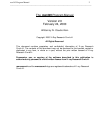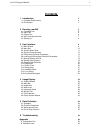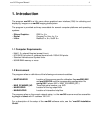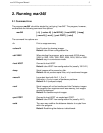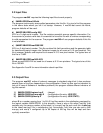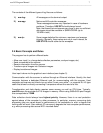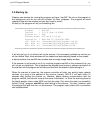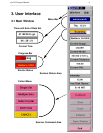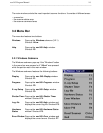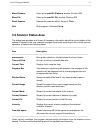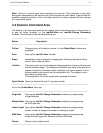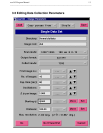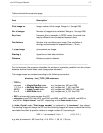m
ar345 Program Manual 7
_
____________________________________________________________________________________
_
The contents of the different types of log files are as follows:
1.) mar.log: All messages on the terminal output.
2.) mar.spy: Native mar345 controller messages.
These messages become very important in case of hardware
problems. Therefore, USE SPY should always be set.
Note, that these files can become very large in size, so sufficien
t
disk space should be available in $MARLOGDIR (up to
100 MB in total).
3.) mar.lp: Some image statistics like minimum, maximum and average
intensity. Normally, these values are not of much interest, so
USE STATS should rather be the exception.
2
.4 Basic Concepts and Rules
The program has to perform different tasks:
− Allow user input (i.e. change data collection parameters, analyze images, etc.)
− Send commands to the scanner.
− Receive information from the scanner
− Transform spiral images into Cartesian images.
− Display transformed images.
User input is done via the graphical user interface (see chapter 3).
Communication with the scanner is realized through an Ethernet interface. Usually, the ho
st
computer features a dedicated Ethernet card for communicating with the scanner. Ho
st
computer and scanner are linked via a so called "cross−over cable", i.e. a special RJ−45 typ
e
cable that allows for directly connecting 2 computers without the need of a hub.
Transformation and data display requires some memory as well as CPU−time. Typicall
y,
m
ar345 keeps the equivalent of 2.5 images in memory. When using 3450x3450 pixel image
s
this corresponds to 75 MB.
Data collection should always have highest priority. However, there is no real protectio
n
against abuse of the computer by other processes. In particular, memory consuming dat
a
processing jobs can cause drops in performance of the workstation to such a degree tha
t
nothing else will work. Also network I/O can severly degrade the host computer performance
,
e.g. when processing data across NFS−mounted disks!




